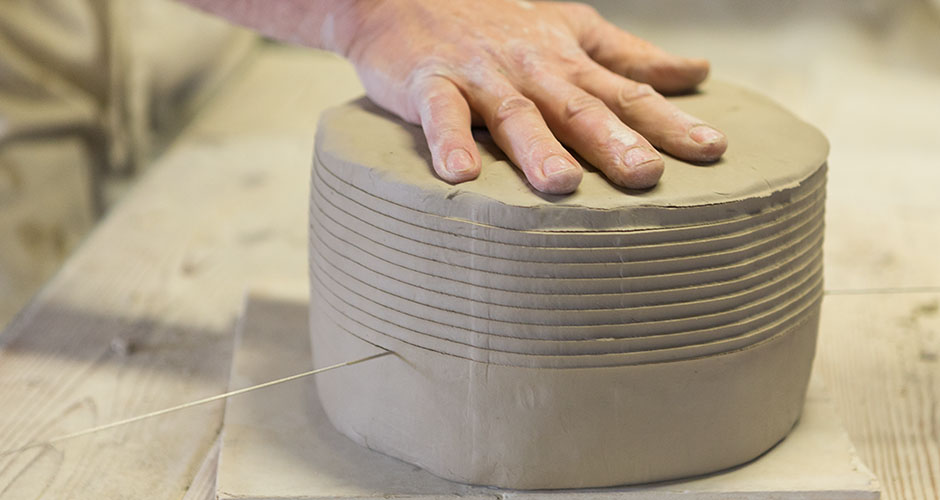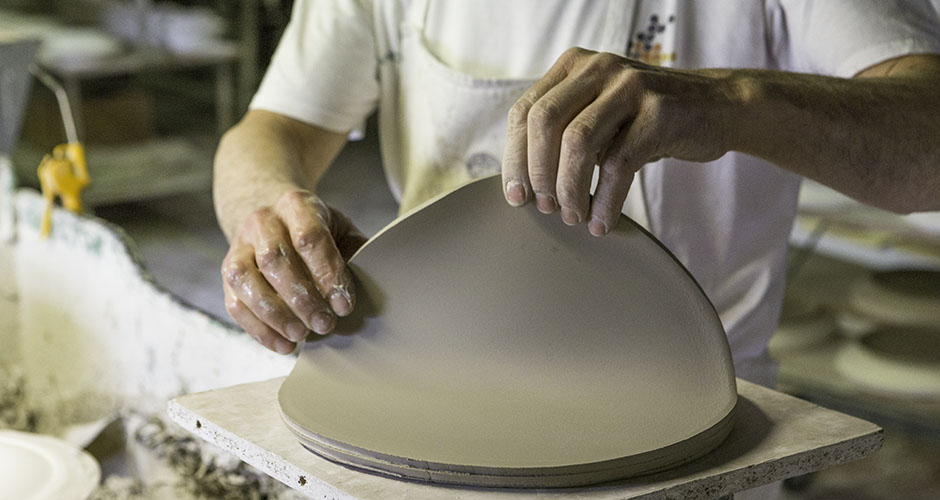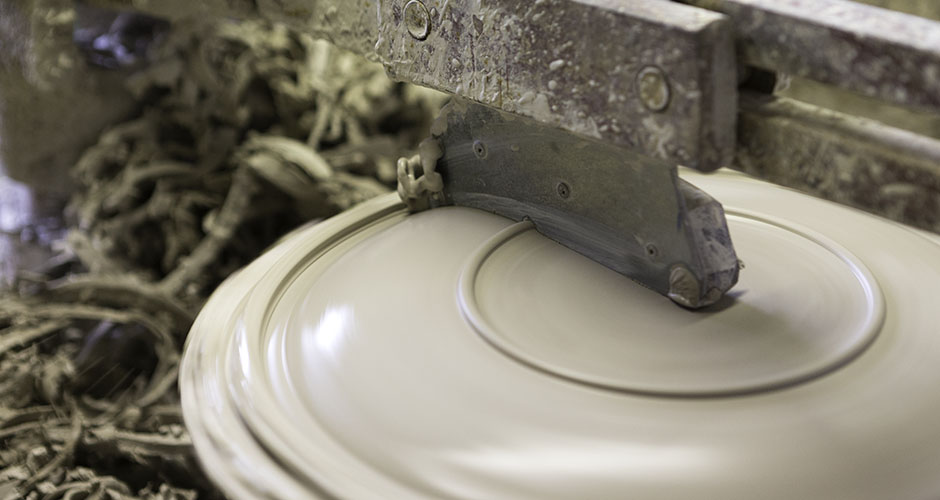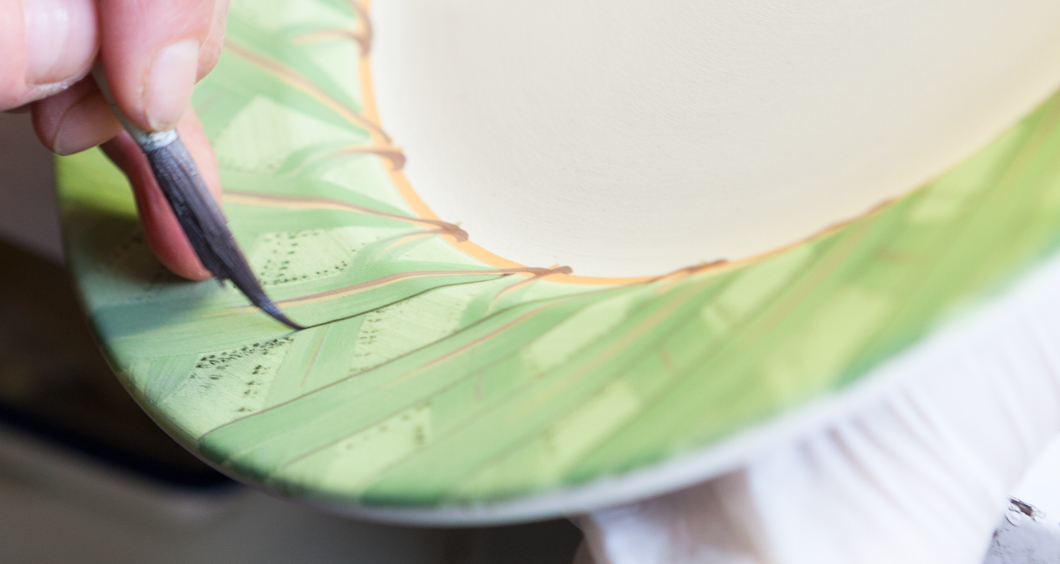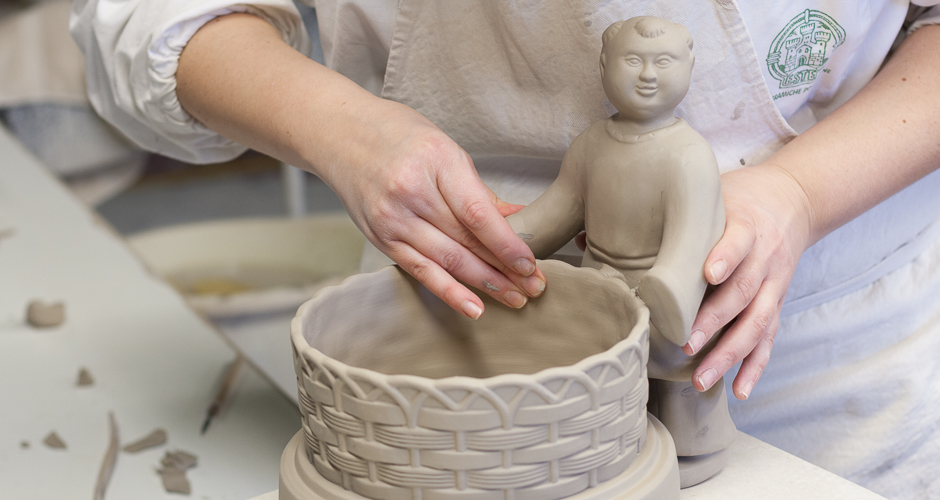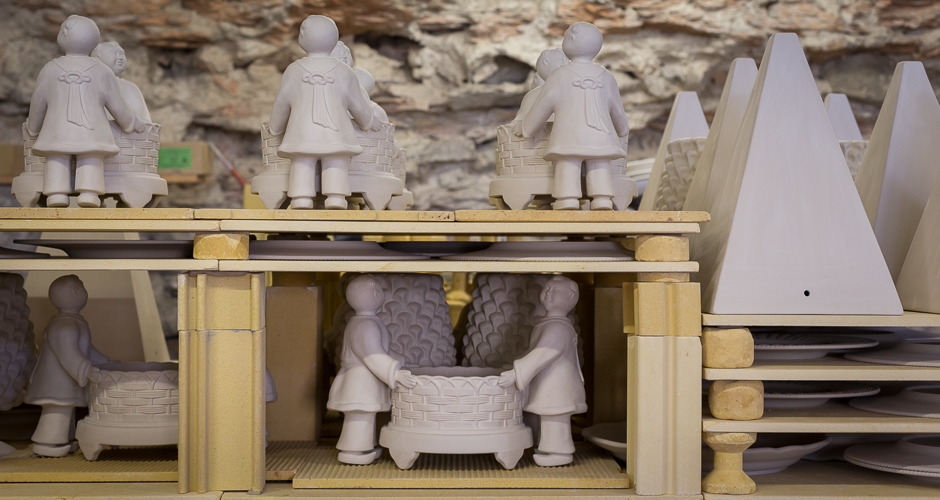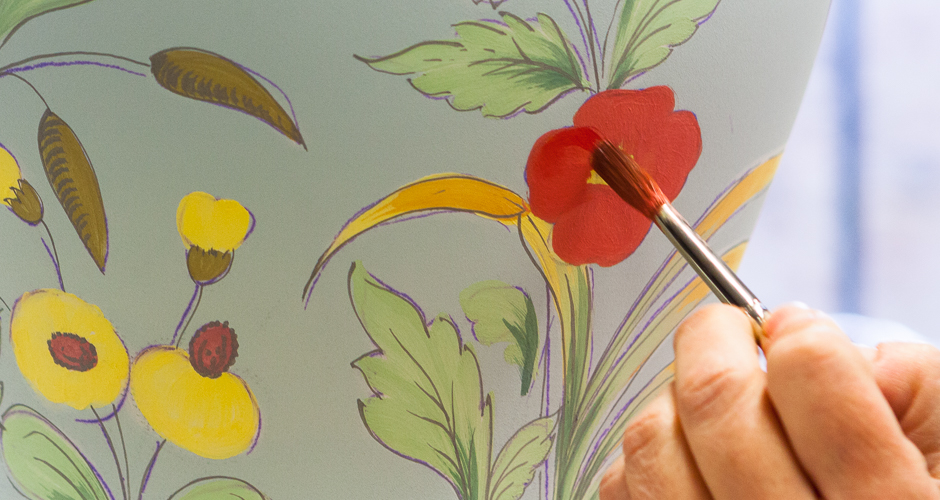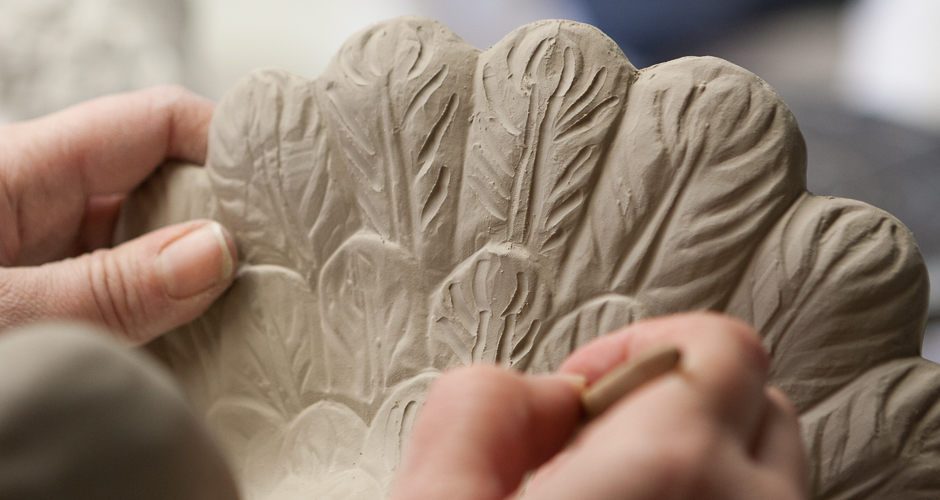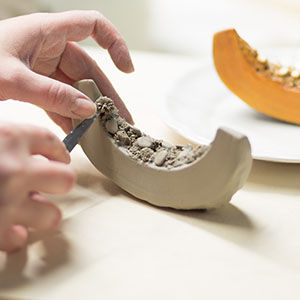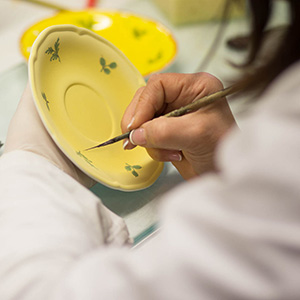We use white clay to make our products for both tableware and gift items. It’s one of the oldest materials used in the ceramics industry. Liquid clay is poured into plaster molds. Water is absorbed by the mold, leaving a dense but fragile clay object. When the object is removed from the form, each item is carefully examined for possible defects. After which, acceptable pieces are hand finished removing slight imperfections of the molding process.
After a period of two or three days, dried, refined objects are ready for the first firing. After the first firing, between 1000°C and 1050°C (1832°F-1922°F), the unglazed pieces are commonly called “bisqueware”.
Critical to the success of a hand painted ceramic piece is its decoration. Our highly skilled technique is without a doubt the most prized, original method of decoration. Thanks to the color tone of our glazes, and the unlimited creativity of our craftsmen, the results are highly evocative. Our under glaze colors endure the extremely high temperatures of the second firing, and under the thin surface, the glass glaze becomes brilliant and protected from wear. Over glazes, such as gold, are applied during a more complex third firing at a lower temperature, which these materials require. With the help of modern technology, these time-tested techniques maintain and raise the quality of our ceramics.
Our tableware can be washed in the dishwasher using a gentle “hand wash” cycle and little detergent. We do not recommend their use in microwaves. This avoids breakage due to the thermal shock caused by the food’s extremely rapid temperature increase using this cooking method. Furthermore, gold or platinum trimmed ceramics should never be used in the microwave.
home | manufacturing
